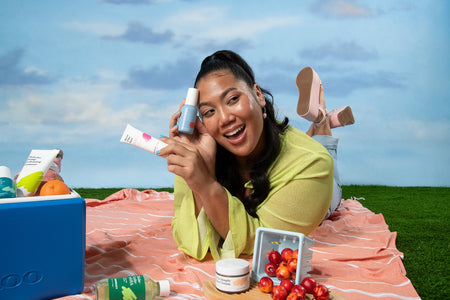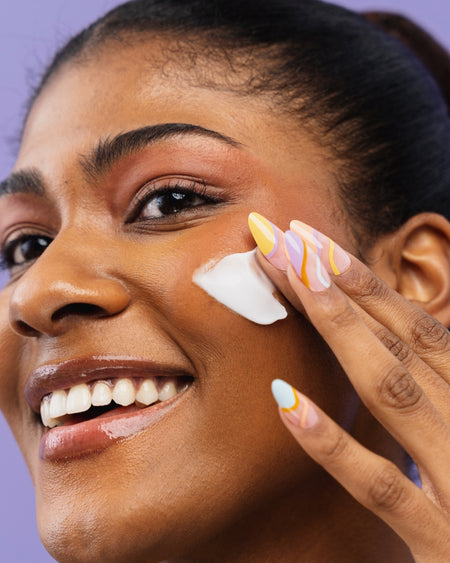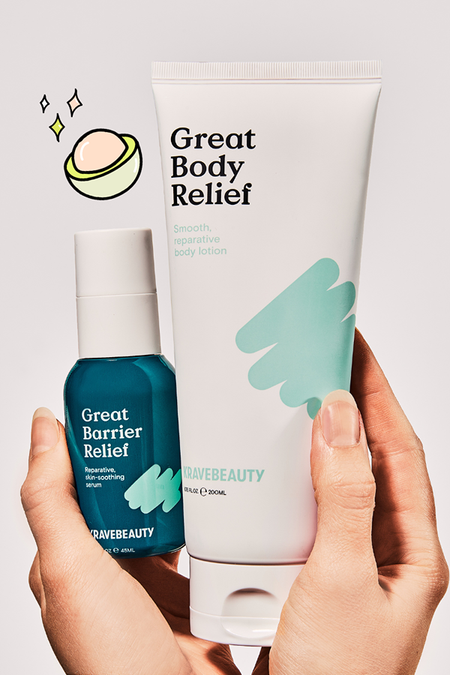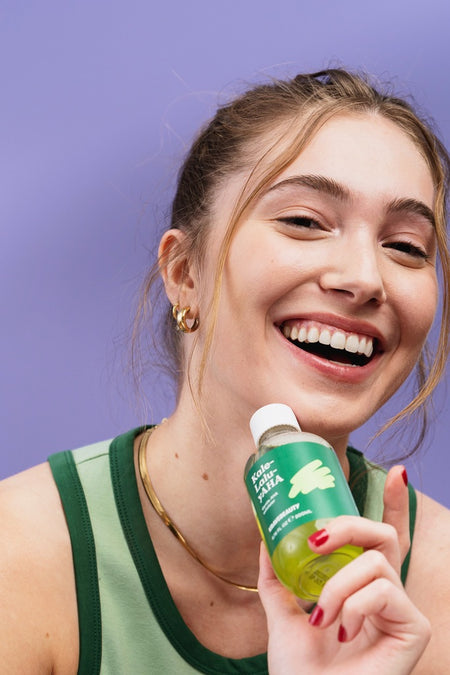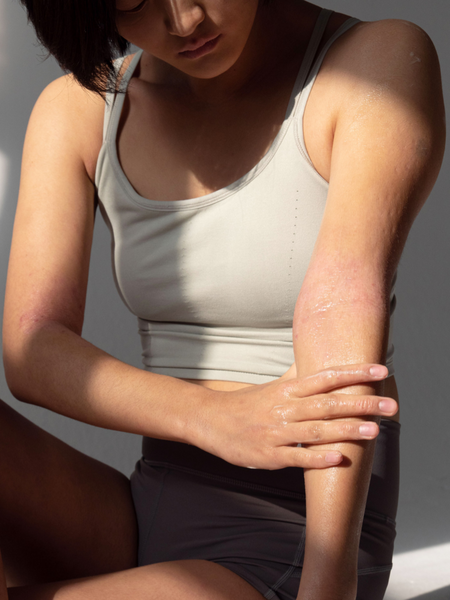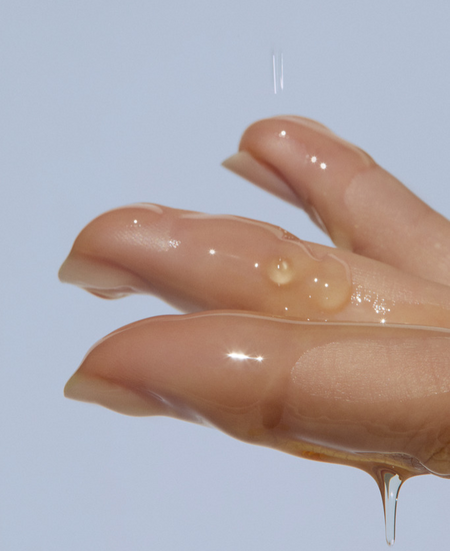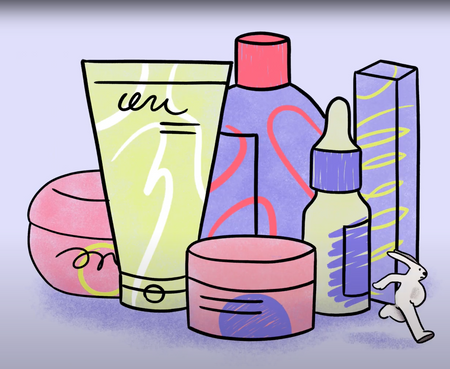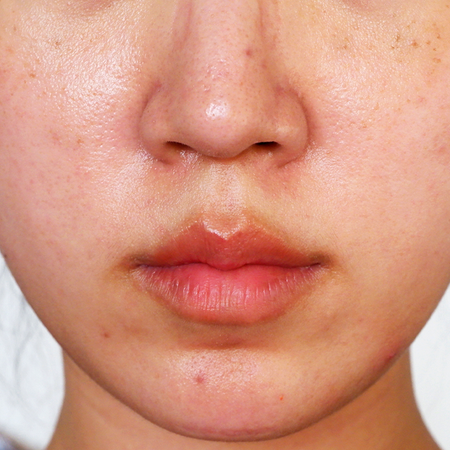Ingredient Series: The Chemical Exfoliators, AHA and BHA

Let’s talk about chemical acid exfoliators. It sounds a little scary and kinda makes you wonder: Is applying chemicals on my skin even safe? Won’t ‘acid’ anything burn off my skin? But are these products really as daunting as they sound?
Not at all. AHAs and BHAs can be great allies to our skin when used smartly. Not only can they smoothen the skin, but they can also help fade pigmentation, reduce the appearance of pores and fine lines, and even help fight acne (Um, yessss please). To top it all off, they’re often gentler to use on the skin than physical scrubs are and with regulated use cause less damage to your skin barrier.
BUT HOW DOES ANY OF THAT ACTUALLY WORK?
Our skin has its own natural cell turnover cycle where we shed dead skin cells and produce new ones on the daily. Over time, this shedding process slows down due to biological or external factors, causing undesired skin consequences such as clogged pores, acne, dull skin, hyperpigmentation, as well as, skincare products not absorbing properly.
Chemical exfoliators help to speed up our skin’s natural process of shedding dead skin cells and revealing fresh and healthy skin. Regular use of chemical exfoliators has been linked to smoothing out and brightening the skin’s complexion, as well as, reducing the appearance of acne and fading skin hyperpigmentation. So cool, right?
SO WHAT ARE SOME KEY DIFFERENCES BETWEEN AHAs AND BHAs?
AHA (Alpha Hydroxy Acid) is a water-soluble exfoliant that mainly works on the surface of the skin. Some AHAs specialize in hydrating and enhancing our skin’s natural moisturizing factors– meaning MORE hydration for us! They work by chemically ungluing the bonds between dead skin cells so that the old dead skin cells can gently leave your skin. Overall, AHAs are particularly great for reducing signs of sun damage, evening out skin tone, and exfoliating for most skin concerns. If you’re also in need of some ‘glow’, AHAs can definitely help!
BHA (Beta Hydroxy Acid), on the other hand, is oil-soluble, meaning that it’s able to penetrate deep into your skin. (*Side note: Many people think that our skin absorbs watery ingredients better, but that is far from the truth. Oil based– AKA lipophilic– ingredients are actually able to go much deeper!) BHA works both on the surface of the skin AND inside the pores, dissolving all of the nasty gunk that accumulates there and making it a great ingredient for people with acne-prone and oily skin. In addition, BHAs can not only treat acne and reduce the appearance of large pores, but they also have anti-inflammatory properties that help manage P.acne bacteria in our skin.
So let’s dive a little deeper into some common AHA and BHA agents and give you a general rundown of what makes each one so special.
COMMON AHAs
Glycolic Acid, like our Kale-Lalu-yAHA
- Who’s it for? People with dull skin
- What’s so special about it? Due to its tiny molecule size, glycolic acid is able to retexturize the skin with a smaller concentration than other acids, making it the most effective AHA of all on the list.
- Fun Fact: The Glycolic Peel was one of the first superficial chemical peels to become popular because of its effectiveness and ease of use. They were popularly known as “the lunchtime peel” because they could be completed during the lunch hour by a dermatologist/esthetician, and the patient could return to work without any telltale signs.
Lactic Acid
- Who’s it for? People with drier skin
- What’s so special about it? Lactic acid is the rare acid that both moisturizes and exfoliates. It’s a milder version of glycolic acid that’s great for smoothing the skin.
- Fun Fact: It’s rumored that Cleopatra used to take sour milk baths to maintain that Egyptian glow. And guess what’s derived from sour milk? Lactic acid.
Mandelic Acid
- Who’s it for? People with darker skin tones
- What’s so special about it? Mandelic acid has a larger molecular structure, so it doesn’t penetrate the skin as deeply as glycolic acid does and ends up being less irritating to the skin. That’s why it’s frequently used instead of glycolic acid in skincare products and is often recommended for people with darker skin who are more prone to hyperpigmentation.
- Fun facts: Mandelic Acid is the most gentle AHA of all and therefore is safe to use for pretty much everyone.
COMMON BHAs
Salicylic Acid
- Who’s it for? People with oily, acne-prone skin
- What’s so special about it? Salicylic Acid penetrates deeper into the skin than any other AHA does. It can unclog pores and reduce the appearance of acne and hyperpigmentation. Some even report that it helps to reduce oil production due to the fact that BHAs are oil-soluble!
- Fun facts: Salicylic acid is often used in shampoos to treat dandruff.
Now, acids aren’t so scary after all, are they? As always, we remind you to take the time to listen to what your skin is craving, and if what you just learned chemical exfoliators seems to fit the bill, definitely give them a try!
 Matcha Hemp Hydrating Cleanser
Matcha Hemp Hydrating Cleanser Oat So Simple Water Cream
Oat So Simple Water Cream Beet The Sun SPF 40 PA+++
Beet The Sun SPF 40 PA+++ Great Barrier Relief
Great Barrier Relief Kale-Lalu-yAHA
Kale-Lalu-yAHA

